An artist’s interpretation of a radio object known as L1551 IRS5, which is two young star systems, still surrounded by a disk of gas and dust, in orbit around each other.
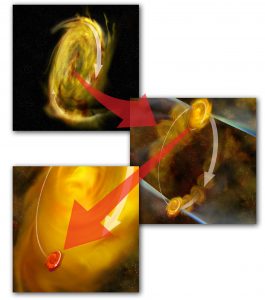
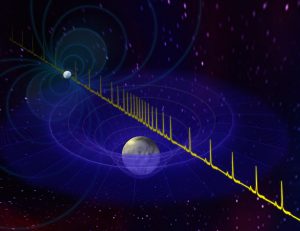
How to Weigh a Pulsar
Pulses from a neutron star (rear) are slowed as they pass near the foreground white dwarf star. The effect, known as the Shapiro Delay, is the extra time delay light experiences by traveling past a massive object due to general relativistic time dilation. Spinning 317 times per second, this pulsar (PSR J1614-2230) and its companion white dwarf star complete an orbit in just under nine days. The pair, some 3,000 light-years distant, are in an orbit seen almost exactly edge-on from Earth, which gives astronomers the information they need to make a mass measurement.
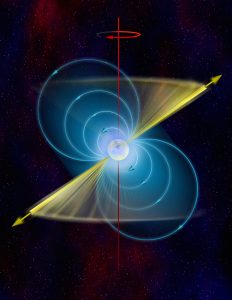
Pulsar
In this artist’s interpretation, the basics of a pulsar are color-coded. In white is the neutron star. Its powerful magnetic field is shown in blue. The north and south poles of that magnetic field, and the directions from which the pulsar’s beams shoot, are in yellow. And in red is the axis of rotation of the star. That axis is offset from the beam, which is why when the star spins, the beam sweeps past us.
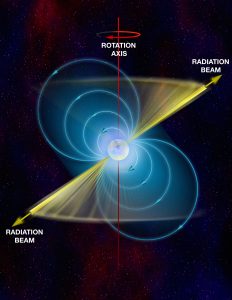
Parts of a Pulsar
In this artist’s interpretation, the basics of a pulsar are color-coded. In white is the neutron star. Its powerful magnetic field is shown in blue. The north and south poles of that magnetic field, and the directions from which the pulsar’s beams shoot, are in yellow. And in red is the axis of rotation of the star. That axis is offset from the beam, which is why when the star spins, the beam sweeps past us.
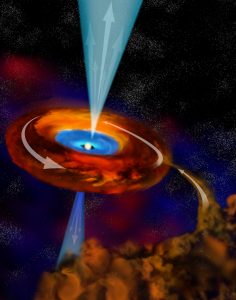
Feeding a Star
In this artist’s interpretation, a massive young star draws matter around it, so much so that its magnetic field is overwhelmed with charged particles that are shot outward as jets from its poles.
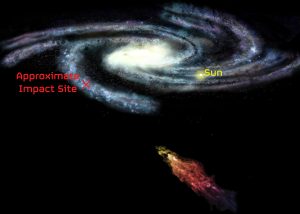
Smith’s Cloud on Its Way to the Milky Way
A giant cloud of hydrogen gas is speeding toward a collision with our Milky Way Galaxy, and when it hits — in less than 40 million years — it may set off a spectacular burst of stellar fireworks. The cloud, called Smith’s Cloud, after the astronomer who discovered it in 1963, contains enough hydrogen to make a million stars like the Sun. Eleven thousand light-years long and 2,500 light-years wide, it is only 8,000 light-years from our Galaxy’s disk. It is careening toward our Galaxy at more than 150 miles per second, aimed to strike the Milky Way’s disk at an angle of about 45 degrees. Don’t worry! It will hit 30,000 light years away from Earth.





